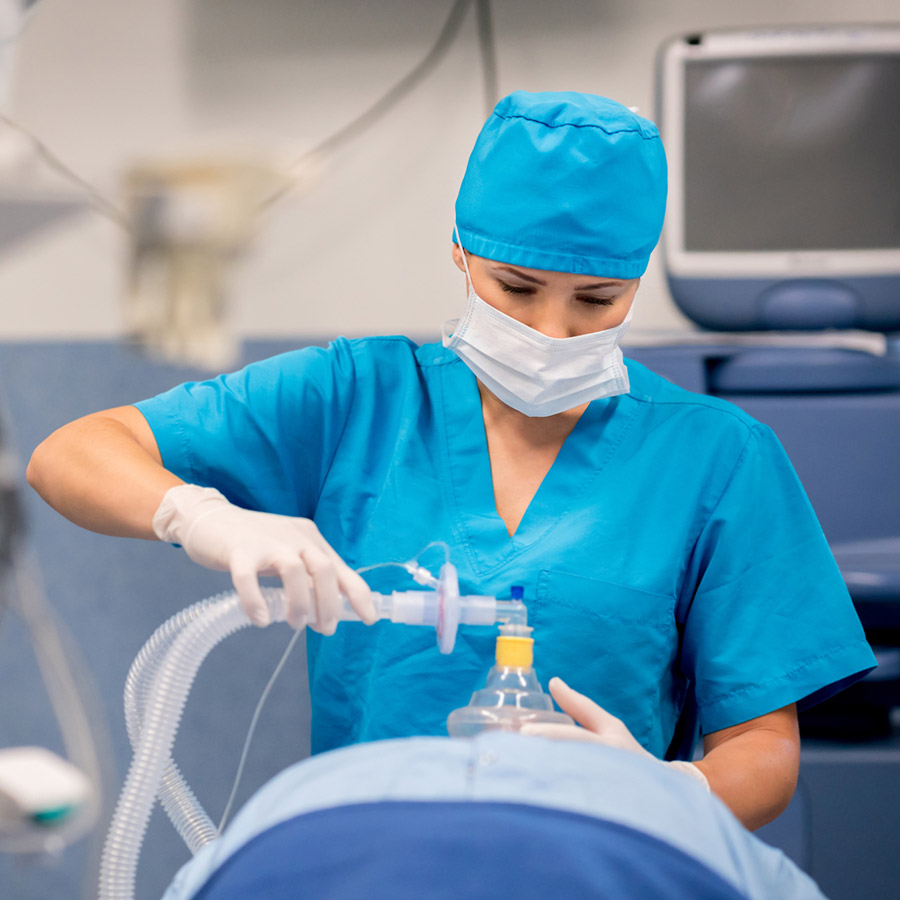Laboratory To Go: A Revolution at the Point of Care
Analyses from pharmacies, gyms and supermarkets

Previously stationary laboratory and medical equipment is going mobile with the development of smaller and lighter yet higher-performing devices, refined measuring techniques and quick results. The potential for treating, examining and diagnosing patients in a mobile laboratory opens up opportunities for medical services outside of hospitals and doctors’ offices. These could include diagnostic examinations for everyone from the chronically ill, suffering from diseases such as diabetes or asthma, to health- and fitness-oriented individuals. Thanks to new devices for private use, these analyses can be carried out just as easily at home as at the point of care — at the pharmacy, in retirement and nursing homes, at the gym, and soon even in supermarkets. The rise in health awareness means that many people want to keep constantly informed about their well-being simply by tracking their vitals themselves, without having to turn to a doctor or a lab. The current trend for self-tracking is receiving a major boost from the availability of these highly reliable, inexpensive and user-friendly devices.
The blood pressure monitor as forerunner
The blood pressure monitor first entered private homes in the 1990s — a development that was actually viewed rather critically by medical professionals in the beginning. They criticized self-monitoring as unreliable, claiming that the methods used at that time were too imprecise. And yet, consumer enthusiasm and technical developments in biotechnology, data transmission and networking as well as a trend toward smaller and smaller devices helped such home care devices to shed their bad reputation. Today’s consumers can link many new services to their smartphones or tablets for intuitive control via a familiar interface. Gone are the days of making the trip to the doctor’s — medical devices now come to the patient.
In addition to devices for patient use, more and more mobile solutions for quick diagnosis are being developed which are improving workflows in the healthcare sector. Paramedic services, operating rooms, rehab clinics and much more are being equipped with these solutions, which are operated by trained personnel. Such equipment is notably more complex and function-oriented. It is also changing processes in the sector. Blood sugar levels, MRSA bacteria and antioxidants — compounds responsible for combatting free radicals in the body — can be detected quickly and painlessly. Aside from their preventative uses, these solutions can also help quickly ascertain information regarding acute treatment, for instance whether a patient is a carrier of antibiotic-resistant pathogens. Such analyses currently take two or three days using complex processes, but in the future, results will be available much sooner without the need for transport to a stationary laboratory.
How does this development affect pump manufacturers?
For one thing, the trend toward more compact devices presents a major challenge. Components such as pumps have to be adapted accordingly to become smaller, lighter and consume minimal power through battery operation — without compromising on precision. Smaller sample volumes along with much shorter and narrower flow paths are also important in this generation of devices.
Point-of-care testing (POCT) instruments are typically designed to hold a disposable cartridge or chip containing the sample and any reagents. The liquids in the cartridge can be moved via pressure or vacuum, however device manufacturers generally prefer to use vacuum because of the reduced likelihood for contamination.
There are certainly point-of-care analytical systems which don’t require the use of a pump, the simple lateral flow tests such as pregnancy tests, for example. The more complex the analysis, the higher the on-board liquid handling requirements are. These include sample preparation, fluid dosing, mixing, air introduction, incubation, degassing, valve operation, filtration, cleaning and lysis. These complex procedures conflict with the desire for inexpensive tests. Integrating pumps and other auxiliary components in the reusable portion of the device and relocating the remaining diagnostic functions to a disposable chip or card is one possible remedy. In that case, an interface connecting to the chip or card would become necessary.
The instrument design trend of late has been for the device manufacturer to focus their resources on their core competencies of assays, chemicals and analyses and leave the optimization of the mechanics and fluidics to the pump manufacturer and/or contract engineering firm. This market is growing much faster than the rest of the medical technology sector. Suppliers who can guarantee accelerated product readiness and an earlier market launch thanks to certified solutions and pre-tested modules are in demand. KNF offers its partnership and extensive know-how to POCT instrument providers for the development of new devices. Their experience, expertise and desire to assist in the success of highly complex and challenging projects continue to be the driving forces for engineers, project managers and everyone involved.



